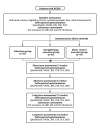Rotator cuff-related shoulder pain: does the type of exercise influence the outcomes? Protocol of a randomised controlled trial
- PMID: 33154058
- PMCID: PMC7646354
- DOI: 10.1136/bmjopen-2020-039976
Rotator cuff-related shoulder pain: does the type of exercise influence the outcomes? Protocol of a randomised controlled trial
Abstract
Introduction: Lifetime prevalence of shoulder pain is 70%, and approximately 50% of people with shoulder pain will experience pain for more than a year. Rotator cuff-related shoulder pain (RCRSP) is the most common shoulder condition and the main non-surgical intervention is exercise therapy. For approximately 30% of people with RCRSP, this approach does not lead to a significant reduction in symptoms. This may be due to an inappropriate dosage or choice of exercises. The aim of this investigation is to compare the short, mid and long-term effects, in terms of symptoms, functional limitations, kinesiophobia and pain catastrophising, of three different shoulder rehabilitation approaches (education, strengthening, motor control) in adults with RCRSP.
Methods and analysis: In this single-blind (assessor), parallel-group, randomised clinical trial, 123 adults presenting with RCRSP will take part in a 12-week rehabilitation programme. They will be randomly assigned to one of three groups (education only, strengthening approach or motor control-focused approach). Abbreviated version of the Disabilities of the Arm, Shoulder and Hand Questionnaire, the primary outcome, Western Ontario Rotator Cuff Index and Brief Pain Inventory will evaluate symptoms and functional limitations, while Tampa Scale of Kinesiophobia and Pain Catastrophizing Scale will evaluate pain-related fear and catastrophising at baseline and at 3, 6, 12 and 24 weeks. Ultrasonographic acromiohumeral distances and tendon thickness will be assessed at baseline and 12 weeks. Intervention groups will be compared on outcomes with intention-to-treat analyses using two-way repeated measures analysis of variance if the data are normally distributed or non-parametric analysis of longitudinal data if they are not.
Ethics and dissemination: Ethics approval was obtained from the Sectorial Rehabilitation and Social Integration Research Ethics Committee of the Centre Intégré Universitaire de Santé et de Services Sociaux de la Capitale Nationale (CIUSSS-CN). Results will be disseminated through international publications in peer-reviewed journals, in addition to international conference presentations.
Trial registration number: NCT03892603; pre-results.
Keywords: elbow & shoulder; musculoskeletal disorders; rehabilitation medicine; shoulder; sports medicine.
© Author(s) (or their employer(s)) 2020. Re-use permitted under CC BY-NC. No commercial re-use. See rights and permissions. Published by BMJ.
Conflict of interest statement
Competing interests: None declared.
Figures

References
Publication types
MeSH terms
Associated data
Grants and funding
LinkOut - more resources
Full Text Sources
Medical
